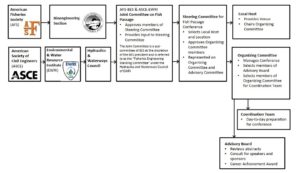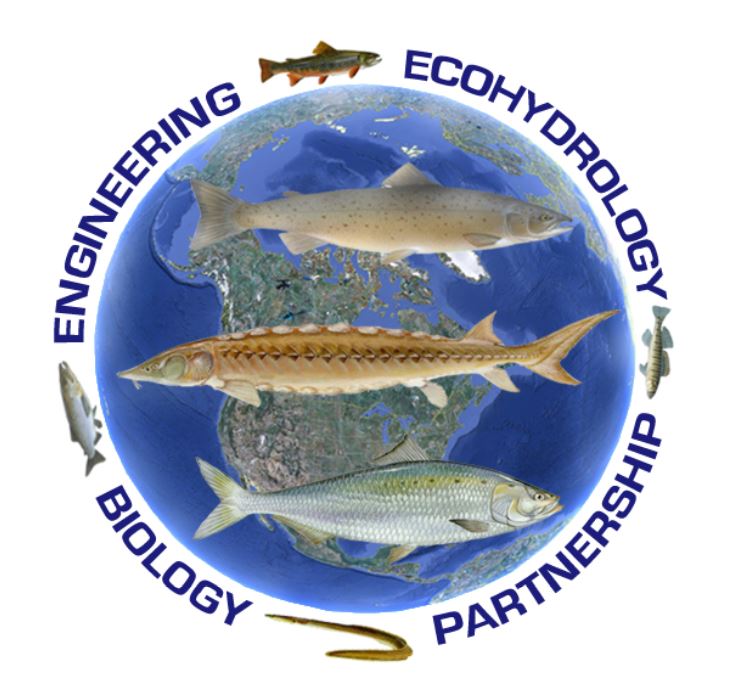About
The Joint Committee on Fisheries Engineering and Science is a professional ‘home’ for fisheries engineers and scientists and the other professionals who work closely with those disciplines. Formed by the AFS Bioengineering Section (AFS-BES) and the ASCE Environmental and Water Resources Institute (ASCE-EWRI), It serves to provide a nexus for collaboration on fish passage, fish screening, hydropower technology, habitat protection and restoration.
In our professional communities and societies, we demonstrate great focus and accomplish great things. However, it is important to recognize that the areas of expertise provided by professional societies are often not mutually exclusive, and in fact part of a greater societies. This is especially true when it comes to waterways and the protection of the aquatic organisms that live within them. The Joint Committee provides an opportunity for professionals with the same interests bring their different approaches together in one place, to share knowledge and expand the range of possible solutions to problems in aquatic management and restoration.
To provide greater collaboration and a nexus for multidisciplinary discussions, the Joint Committee on Fisheries Engineering and Science was formed in 2010 in order to help arrange the first Fish Passage Conference at the University of Massachusetts in Amherst. The Joint Committee is now a funded and permanent standing committee of both ASCE-EWRI and AFS-BES. The committee organizes the annual International Fish Passage Conference (ongoing since 2011), hosts quarterly free webinars on fish passage and restoration, maintains a fish passage data base, and issues the Distinguished Fish Passage Project award. The Joint Committee is a collective of experienced engineers, scientists, planners, and biologists that represent agencies, universities, and private sector professionals. It is the home and steward of the international and annual Fish Passage Conference, where disciplines mix, and collaboration is grounded, reaching outward to facilitate ecosystem recovery on local and global scales.
How to get involved:
- Attend a Fish Passage conference
- Nominate a project for the Distinguished Project Award
- Nominate someone for the Career Award
- Post a citation to the Fish Passage Reference Database
- View our free webinars
- Celebrate World Fish Migration Day
- Become a Member of the Committee

Organizational Chart showing the lines of authority for the Joint Committee, Steering Committee, and lines of authority for future conferences in the Fish Passage Series.

